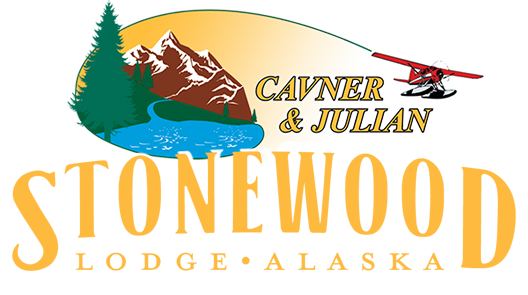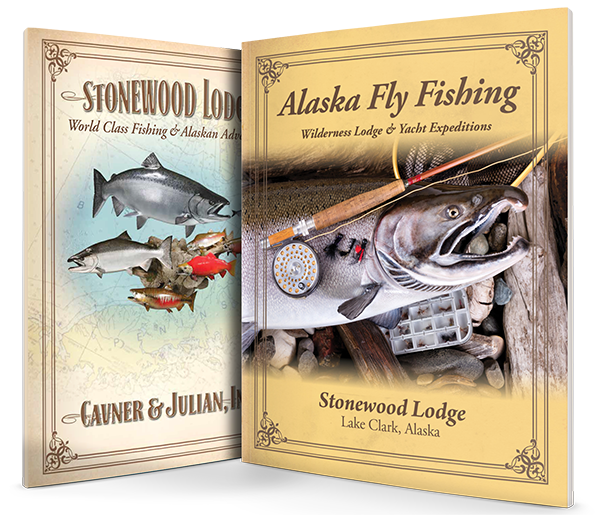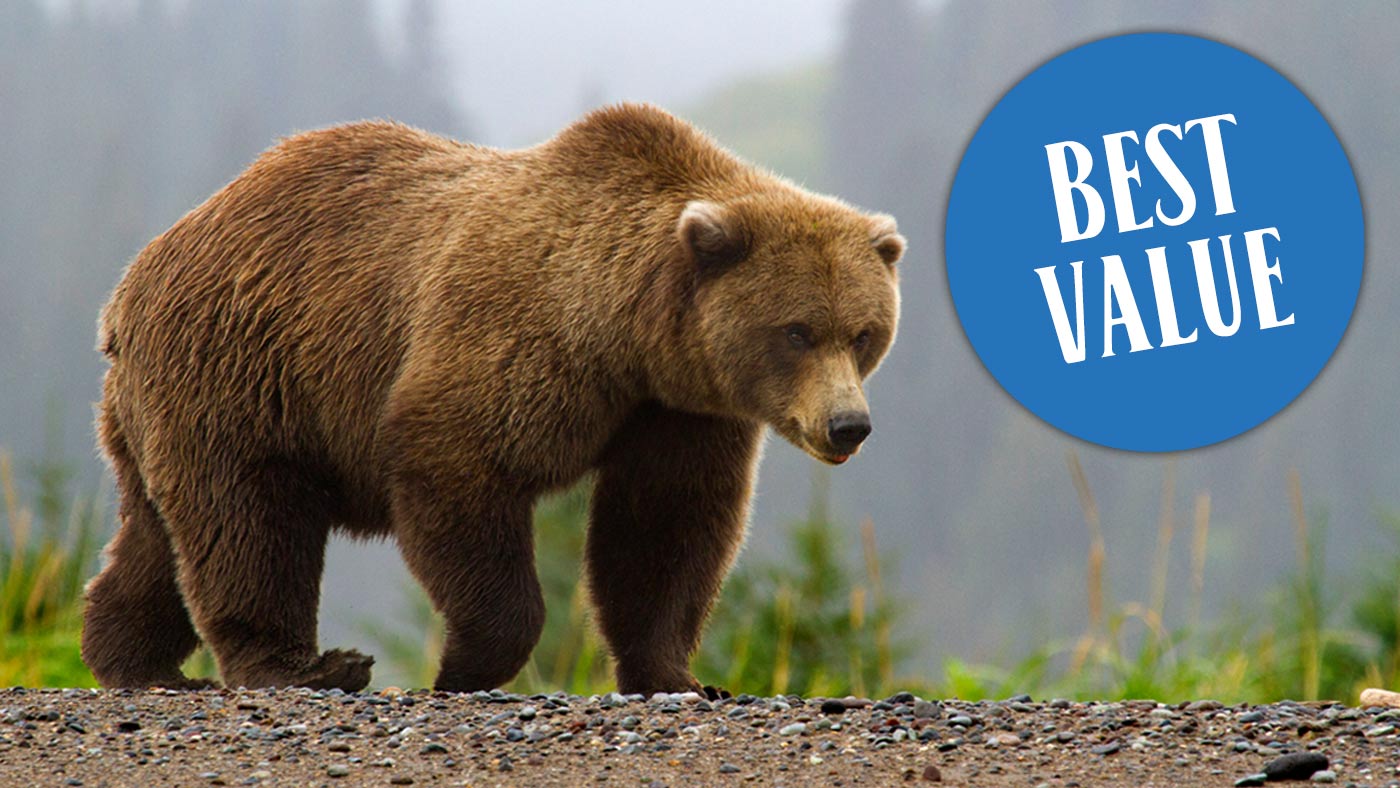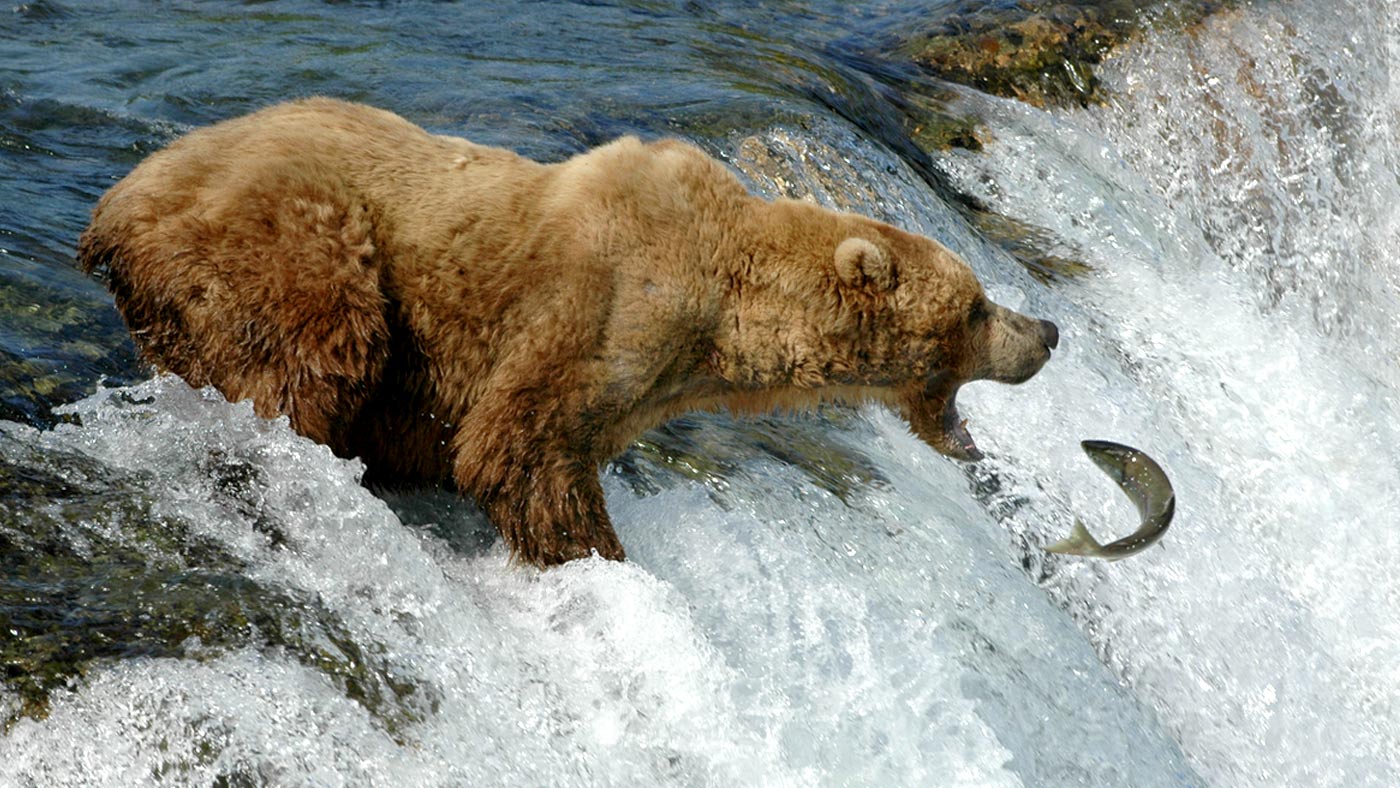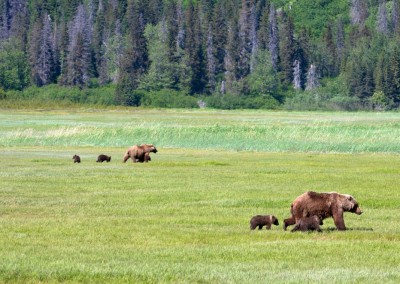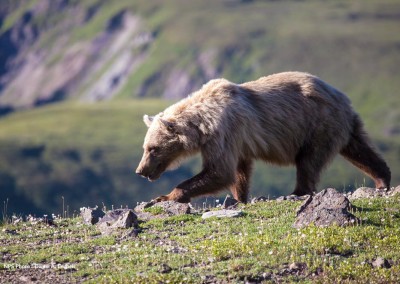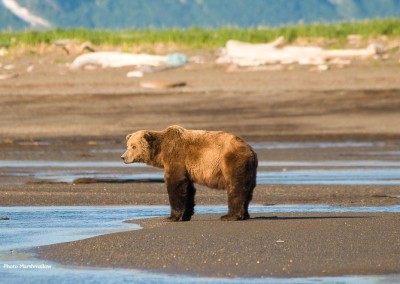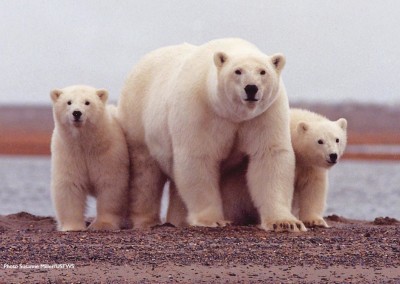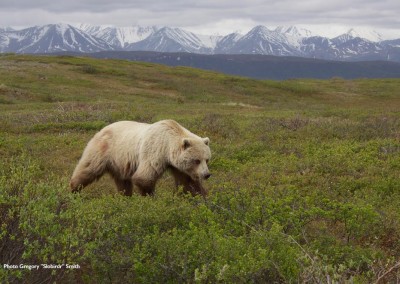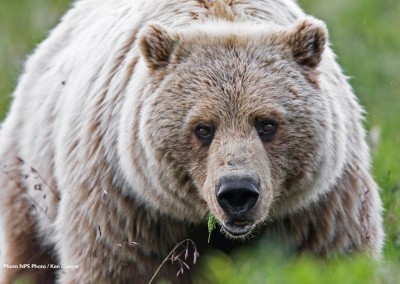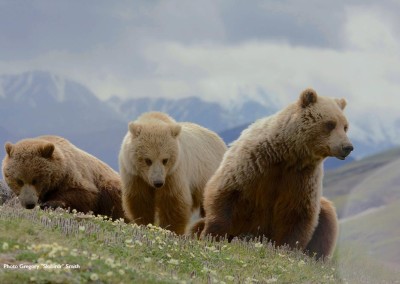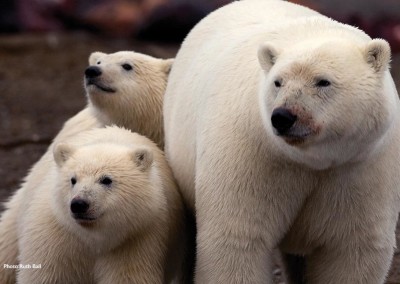
Trip Options Alaska Bears The Parks When to Come Map Accommodations
Lake Clark National Park and Katmai National Park are unmatched when it comes to a true wilderness experience, as they are only accessible by air. Both parks have an array of sites to take in, from the volcanic peaks and mountains topped with glaciers, bear watching on the ocean coastlines and at Brooks Falls, Dick Proenneke’s cabin, the Valley of 10,000 Smokes, countless scenic lakes and rivers, and a host of abundant wildlife. This area is the meeting place for the Arctic/Interior, Aleutian, and Coastal/ Pacific rainforest climates and these ecosystems mix together here to provide a great place to see characteristics from all over Alaska in one place. Our bear viewing and scenic trips are staged from Stonewood Lodge in Lake Clark with daily outings to the most pristine locations. Our limited group size makes it personable and allows ample time for photography opportunities and exploration. With the different avenues of transportation throughout the trip—floatplane and wheelplane, boat, and by foot—you will have unique perspectives in experiencing this incredible area. This trip is highly recommended if you are looking for a total Alaskan adventure and to travel to places very few have ever seen. We have no doubt it will be some of the most memorable highlights of your life!
Brown Bears & Lake Clark National Park
Alaska’s Most Diverse Park
The world’s best brown bear viewing takes place in Southwest Alaska. Spend an unforgettable week in the pristine wilderness of Alaska and view some of the largest and most entertaining bears brown bears in their natural habitat. Take in the beauty of the Alaska wilderness and find out why people call Lake Clark the quintessential Alaska adventure.
Learn More Book Now
Double the Bears & Double the Parks
Lake Clark & Katmai National Parks
Explore two of the world’s premier locations for watching brown bears in their natural habitat and relax at our luxury lodge in the center of Lake Clark National Park and Preserve.You will be assured of opportunities to view majestic brown bears as well as enjoy jet boat rides, day hikes and unforgettable scenic bush plane flights to Alaska's hidden gems.
Learn More Book Now
Northwest Odyssey Luxury Boat: Bears & Parks Tours Lake Clark & Katmai by Ocean
Come on board our custom built Alaska luxury boat for one of a kind brown bear and National Park adventure. The Northwest Odyssey will travel along Cook Inlet an down towards the Alaska Peninsula where guests safely view brown bear and marine wildlife up close at both Lake Clark and Katmai National Parks. Fish trophy salt waters, enjoy delicious meals and experience and an authentic Alaska adventure that is second to none.
Two trip options allow you to do a boat only tour or combine with our luxury inland Lodge on Lake Clark and we also have custom fishing and touring options.
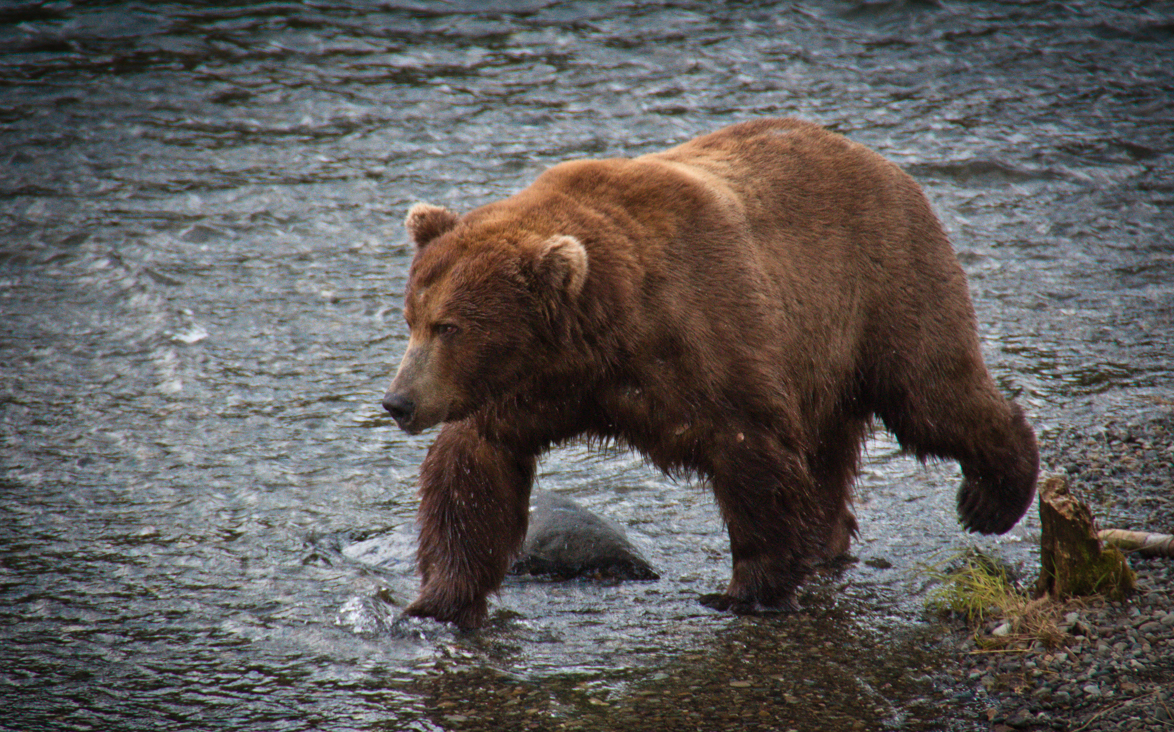

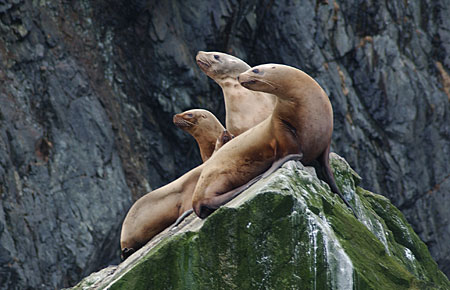
Alaska Bears
Alaska Brown Bears View June through September Brown bears are mainly located in the coastal regions of southern Alaska. The bears living in Alaska Peninsula can be tremendous in size ranging in weight from 800 to 1,200 pounds. Their diet mainly consists of clams, sedge grass and salmon during the annual summer runs. The bears will congregate in the streams during the peak of the Salmon seasons creating great opportunities for photography and wildlife viewing. It is this steady diet of seemingly endless Salmon which allows these bears to attain huge sizes, some of the biggest in the world. The best places to view the Brown Bears are in Katmai and Lake Clark National Parks, both which are only accessible by plane or boat.
The Kodiak Bears is also a brown bear and called a “Kodiak” bear simply because they live on Kodiak Island. Bears located on this island have been historically some of the largest brown bears in the state.
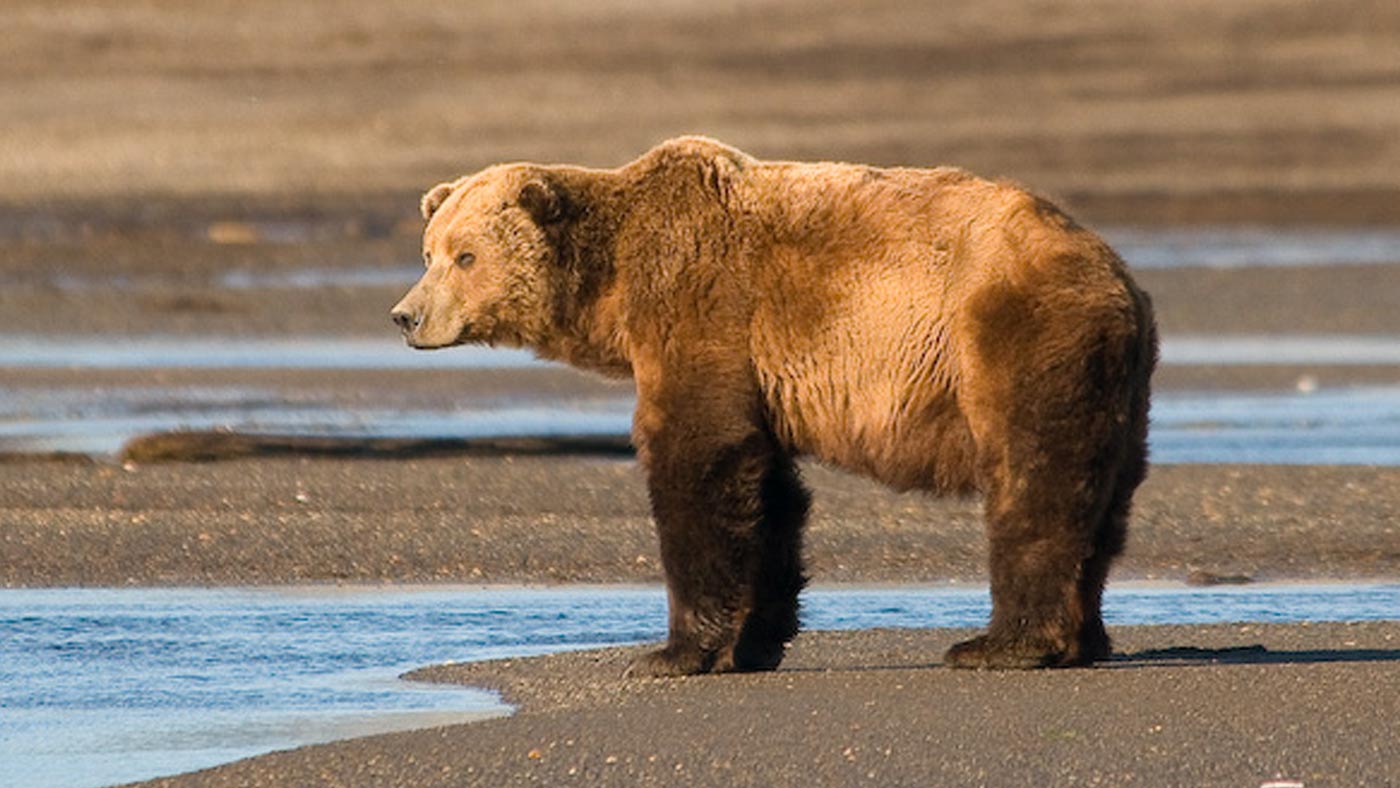
Alaska Grizzly Bears View June through September While Grizzly Bears once roamed in the states of California, Colorado and other Western states, they are most densely populated in Alaska. Most people don’t realize that the grizzly and the brown bear are one species. While the bears on the coast are simply called brown bears, the inland brown bears are called Grizzly Bears. The word “grizzly” means “grizzled”; that is, golden and grey tips of the hair. This is where the bear gets it’s name, from the lighter fur coloring created from the bleaching of the hair in the sun. Because the Grizzly has to forage more for food it doesn’t grow as large as the coastal brown bears which have easy access to Salmon and clams along the beaches. Therefore the Grizzlies can be a more solitary animal and become more aggressive in defending its territory. One of the best locations to view these bears in along the roads in Denali National Park.
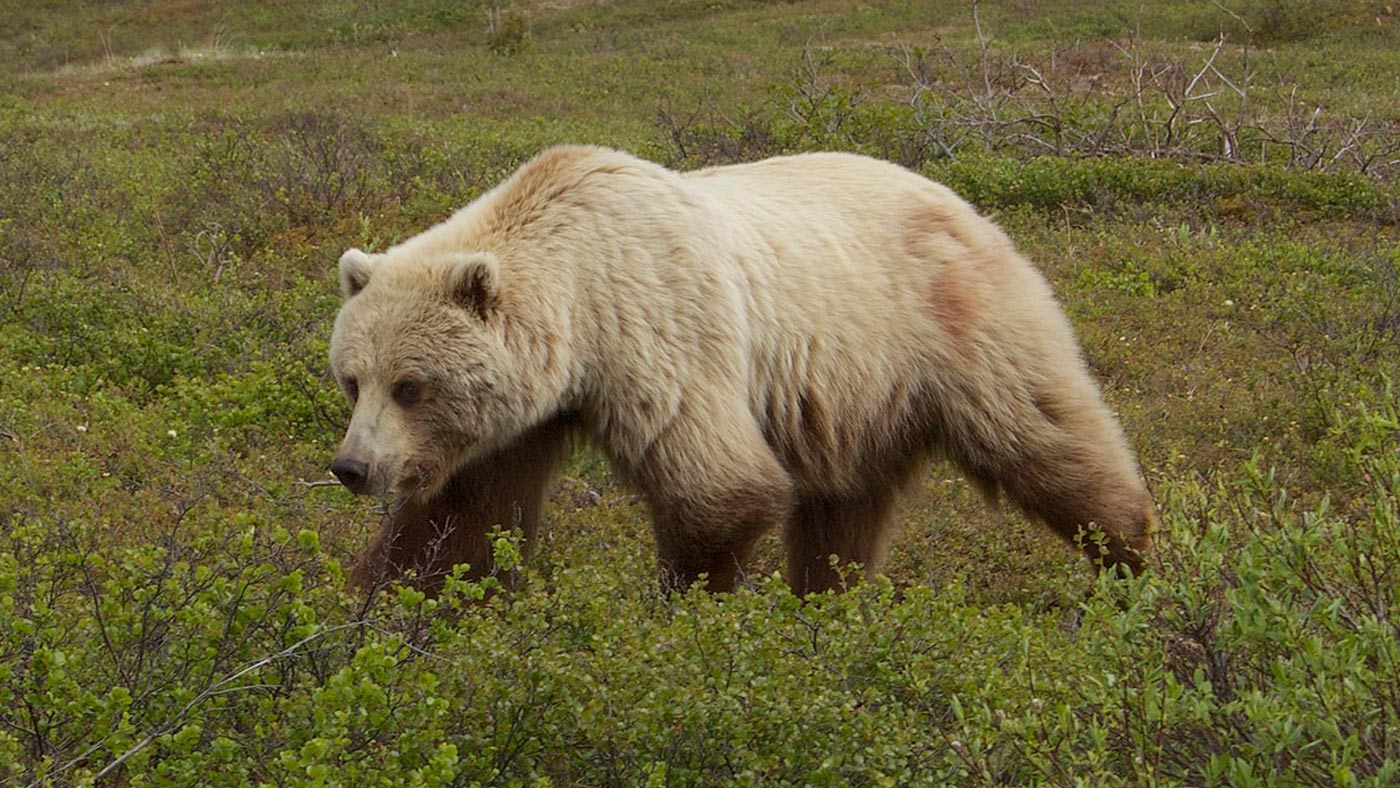
Alaska Polar Bears View in September & October Polar bears live in the Northern tip of Alaska along shores and islands of the Arctic Ocean. In winter they cross the frozen ice bridges further out into the ocean to hunt seals. Polar bears have been spotted on sea ice hundreds of miles from shore. In the summer when the warm weather causes the sea ice to melt, polar bears move back toward shore. The bears main diet seals. They often hunt the seals by resting silently at a seal’s breathing hole waiting for a seal in the water to surface. Once the seal comes up, the bear will spring and sink its jagged teeth into the seal’s head. A polar bear may also hunt by swimming beneath the ice or stalking prey on the large ice sheets. Whale meat is also a welcome meal to these massive creatures. The bears will feed off of the while carcasses which the Inupiat Eskimos hunt in the fall.
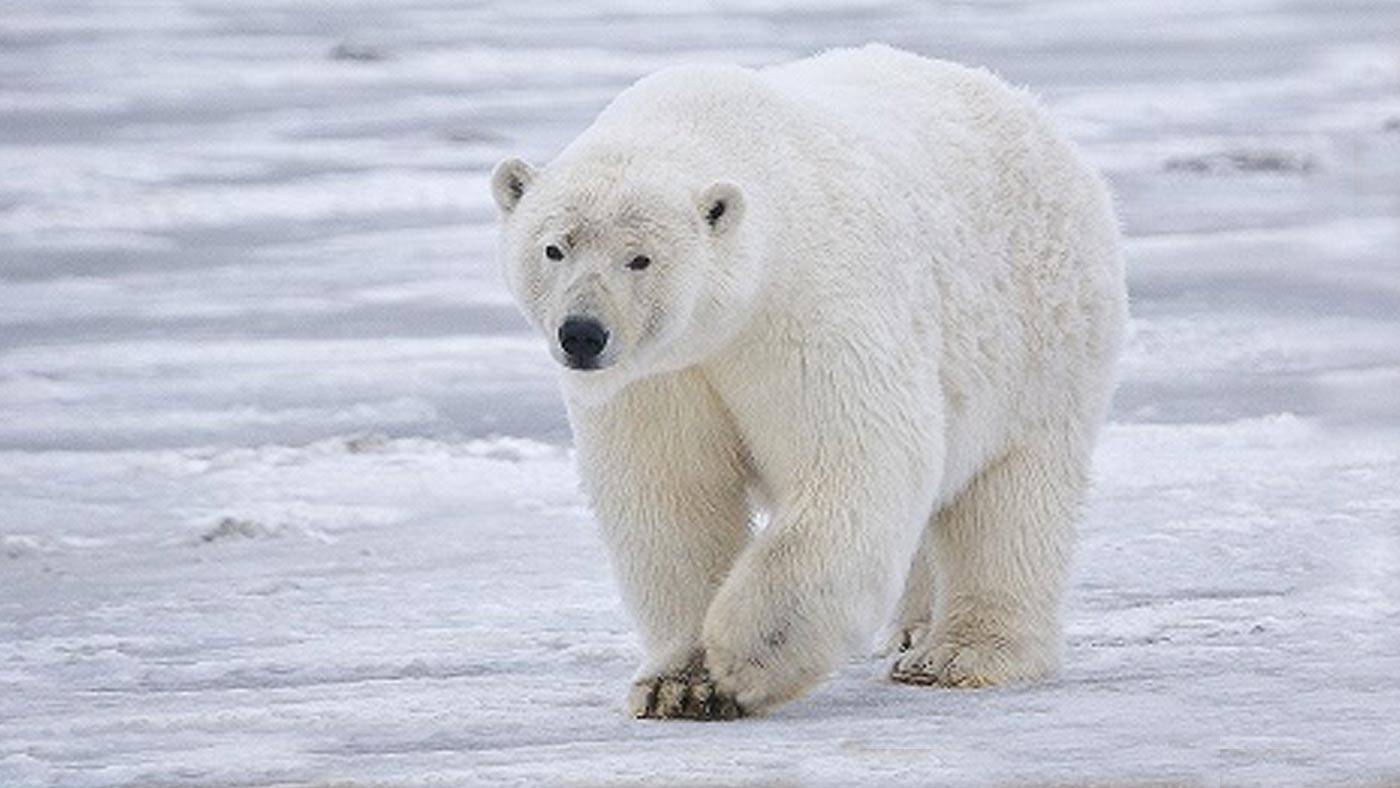
Alaska Black Bears View June through September Black bears are a solitary animal most of the year only pairing up briefly during the mating season. Cubs remain with their mother for about a year, protecting them from adult male bears. Black bears swim well and often climb trees to feed on buds and fruit. They have a keen sense of smell, acute hearing, but poor eyesight. They can be seen at any hour of the day, but are most active at night. Black bears are omnivorous with their diet consisting mostly of vegetable matter followed by a small percentage of carrion, insects and small mammals. They have few enemies, but the one they keep their distance from Grizzlies and Brown Bears. The Glacier bear is a sub–species of the black bear. They have been spotted in various locations in Alaska, but most frequently in the Southeast region of the state. Also know as the “Blue Bear,” this bears coloring is silver-blue or gray.
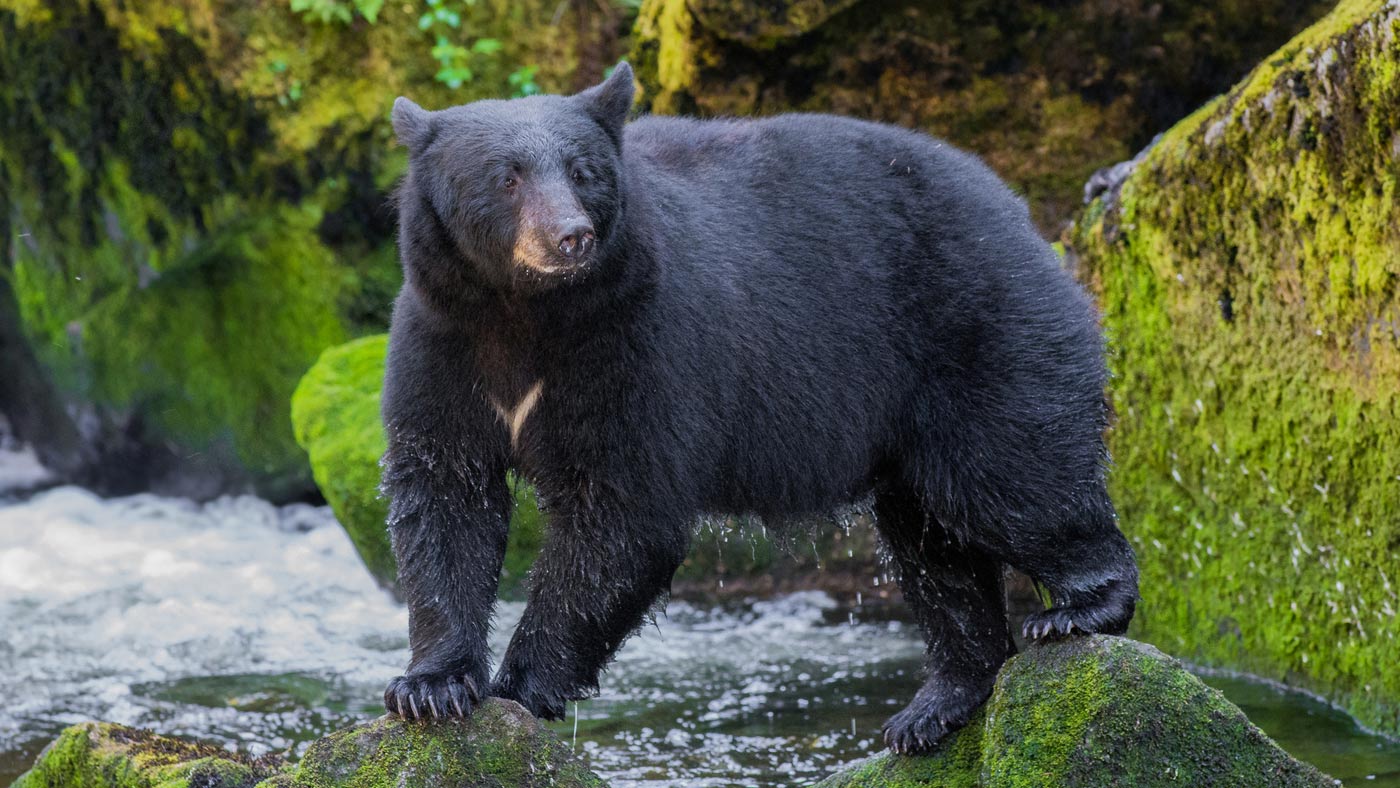
The National Parks & Destinations
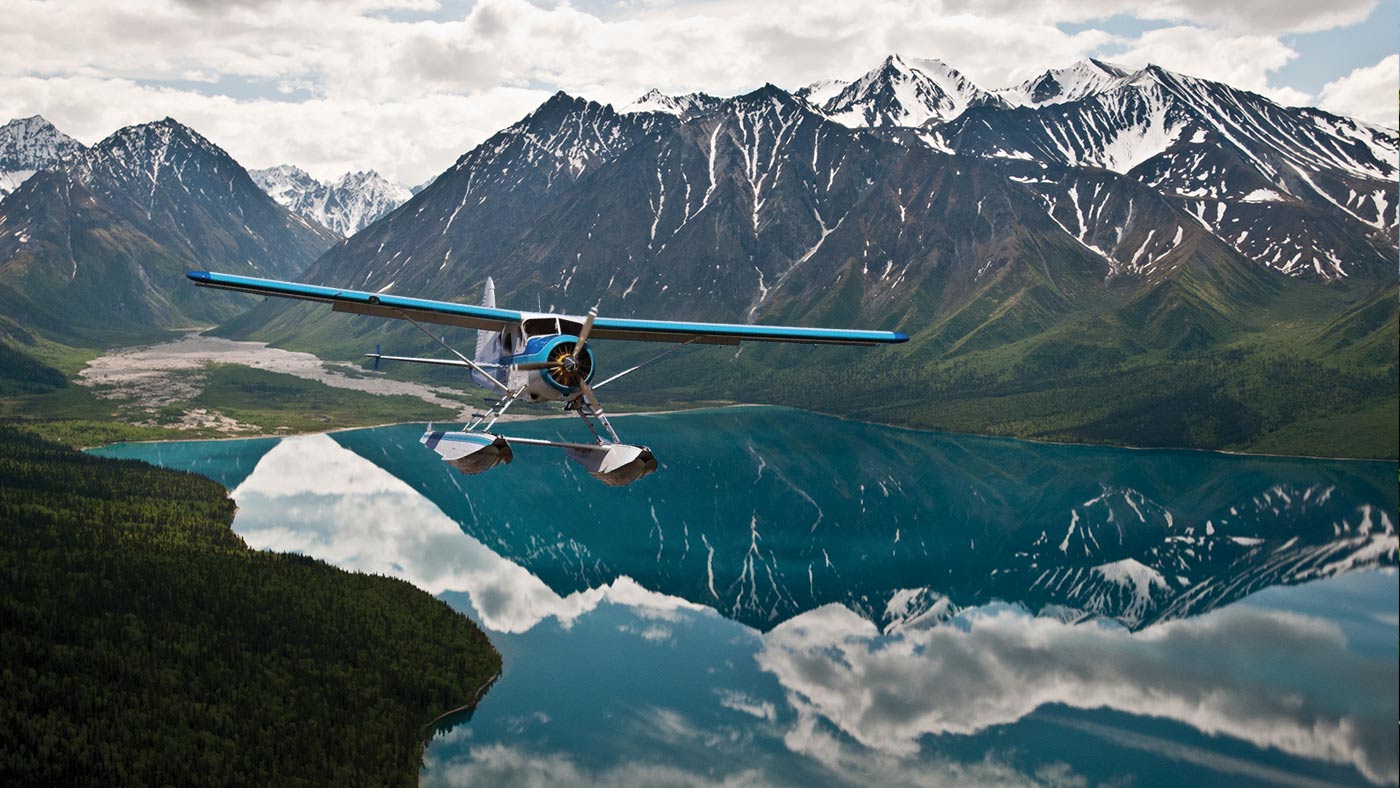
Lake Clark Located about 100 miles (160 km) southwest of Anchorage, Lake Clark National Park could be viewed as Alaska most diverse park. The park includes a collection of features not found together in any of the other Alaska Parks including: the junction of three mountain ranges, a coastline with rainforests, high mountain plateaus with alpine tundra, glaciers, glacial lakes, major salmon-filled rivers, and two volcanoes. Redoubt is one of these volcanoes and it remains active, with eruptions in 1989 and then more recently in 2009.
The park also contains virtually all major Alaskan animals, terrestrial and marine, may be seen in and around the park. This area is also a part of the the famed Bristol Bay watershed which means Salmon, particularity sockeye salmon, play a major role in the ecosystem and the local economy. This also means the the area is home to large populations of brown bears which feed on the spawning salmon and create great opportunities for bear viewing in the park.
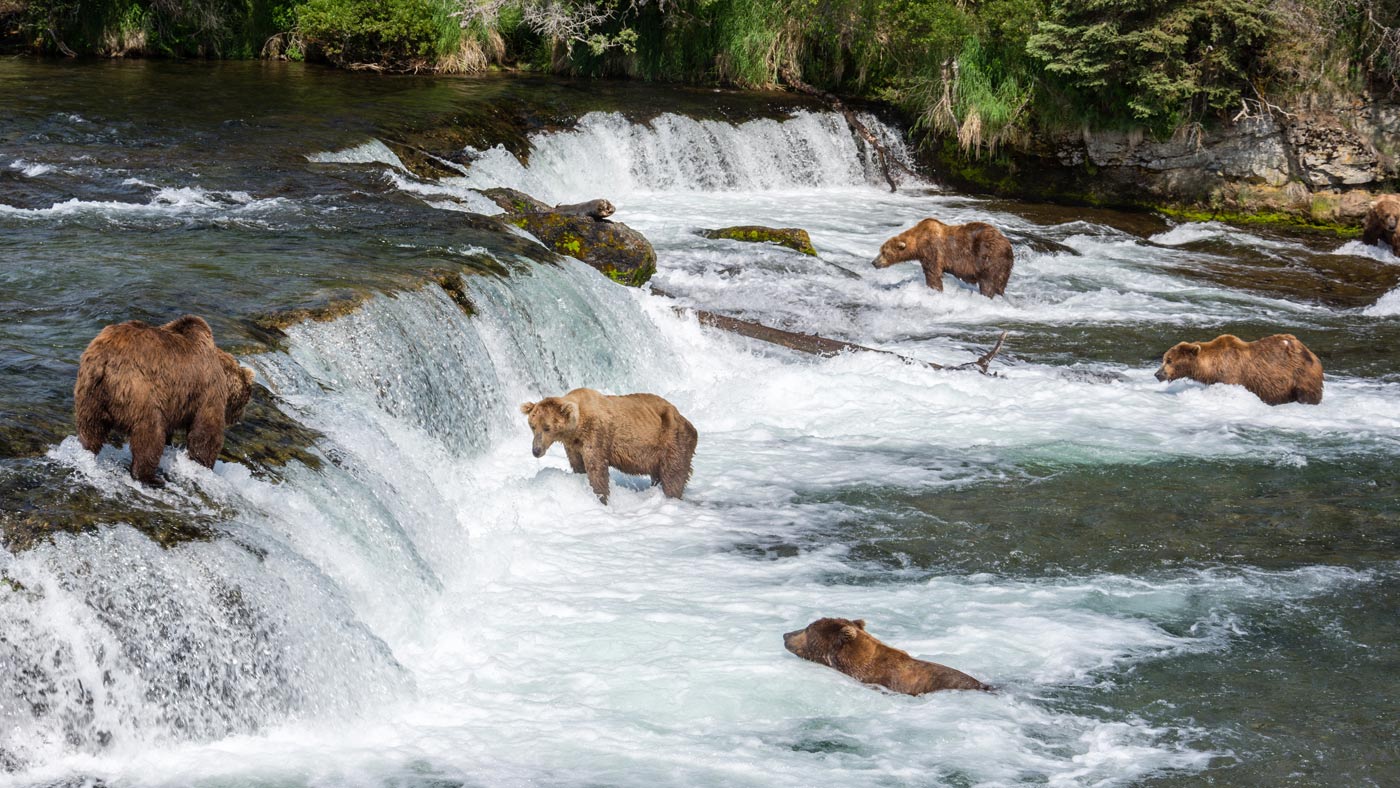
Katmai This stunning park is located in southern Alaska across the Kodiak Island. It is notable for the Valley of Ten Thousand Smokes and for its Alaskan brown bears and Brooks Falls. The park and preserve is roughly the size of Wales and includes as many as 18 individual volcanoes, seven of which have been active since 1900. The park is only accessible by plane or boat along the coastal portions. Most of the visitors come to view the brown bears during the summer and hope to capture the perfect shot of a bear grabbing a Salmon from the waterfalls along the Brooks River. Other visitors come to explore the Valley of Ten Thousand Smokes which was created from the eruption of Mount Katmai and Novarupta in June 1912. Novarupta’s eruption produced a pyroclastic flow that covered a nearby valley with ash as much as 300 feet thick. As the valley deposits cooled, steam came up from fissures and fumaroles, and thus the name of “Valley of Ten Thousand Smokes” was coined.
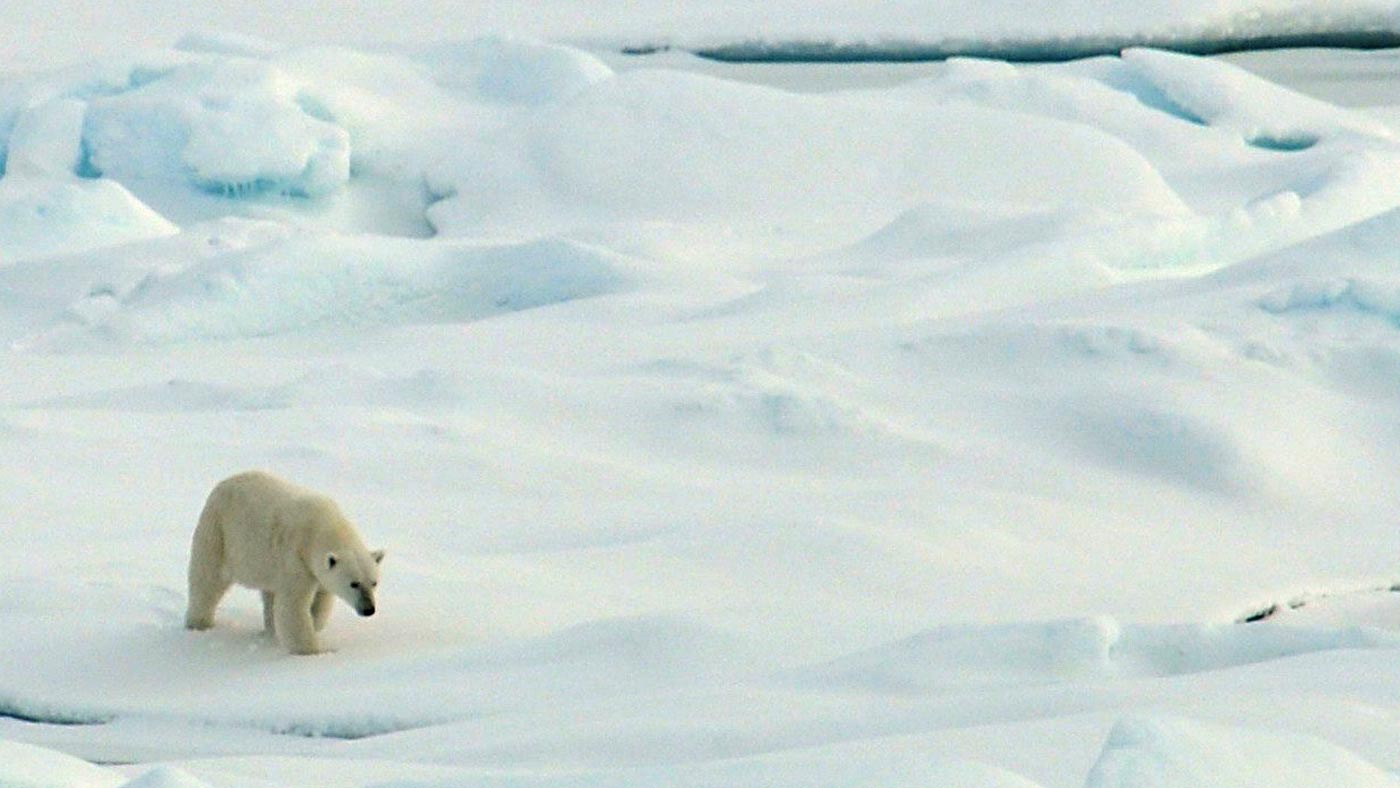
Arctic Ocean The smallest and shallowest of the world’s five major oceanic divisions, the ocean is partly covered by sea ice throughout the year and almost completely in winter. This oceans salinity is the lowest on average of the five major oceans, due to low evaporation, heavy fresh water inflow from rivers and streams. Barter Island was a major trade center for the Inupiat people and was especially important as a bartering place for Inupiat from Alaska and Inuit from Canada, hence its name. The island is home to small village of Kaktovik which has maintained its Inupiat Eskimo traditions with subsistence highly dependent upon the hunting of caribou and whale.
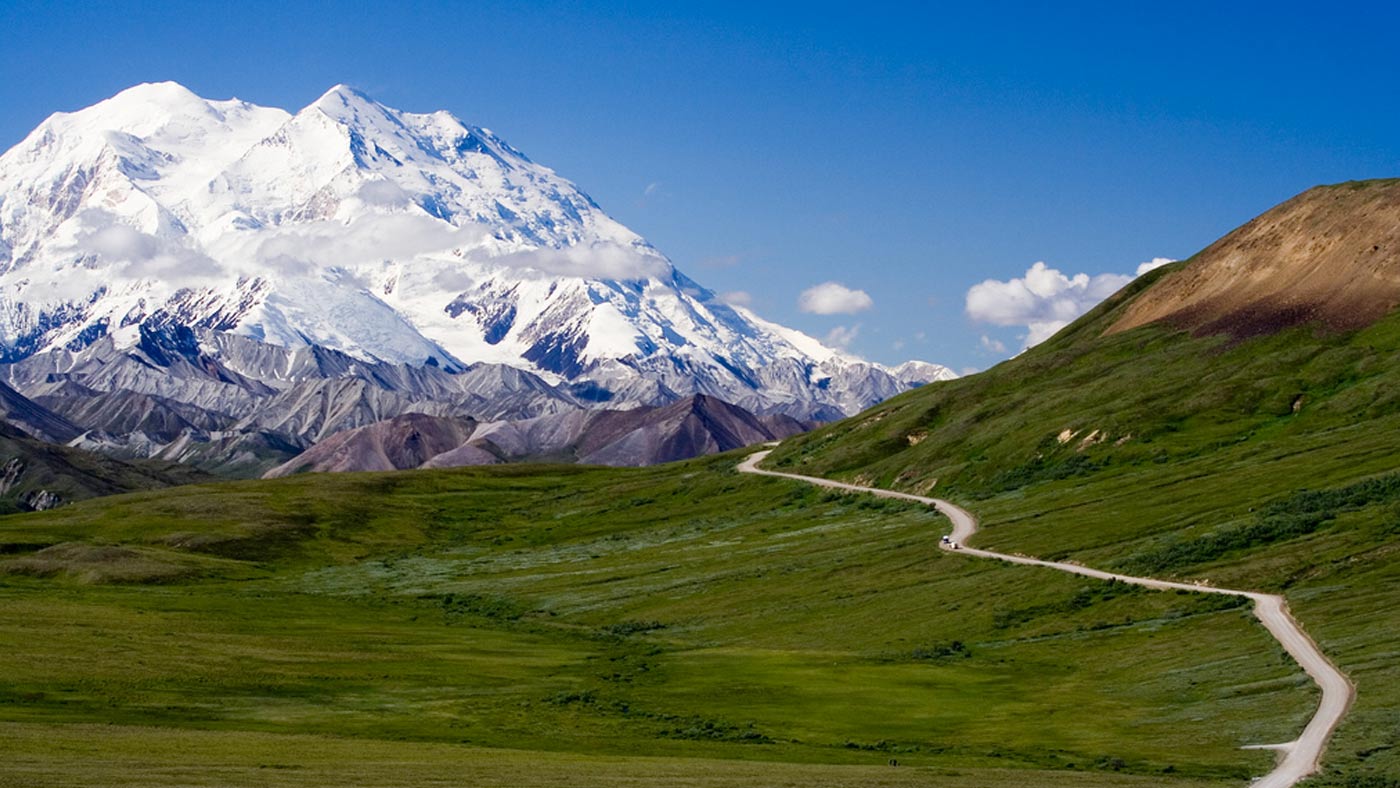
Denali Alaska’s most famous park, this park is centered on Denali (Mount McKinley), the highest mountain in North America. The park encompasses more than 6 million acres with only one major road into the park. Visitors come to view wildlife, climb mountains, and backpack deep into the vast wilderness areas. Wintertime activities includes dog-sledding, cross-country skiing, and snowmachining. Denali is home to a variety of animals which of course include grizzly bears and black bears. Visitors are also able to see herds of caribou, dall sheep on the mountainsides and moose feeding on the aquatic plants of the small lakes and swamps. Gray wolves are also seen here as well as smaller animals, such as hoary marmots, arctic ground squirrels, beavers, pikas, and snowshoe hares are seen in abundance.
When to Come
Brown Bears The best time to view the Brown Bears is during the summer months and into the fall. These bears will come out to the shores in the earlier part of the summer to feed on clams then heard towards the rivers mid and late summer to feed on the Salmon.
Grizzly Bears Grizzlies are less common to view in Alaska because of their roaming habits and more solitary lifestyle but there is a solid chance the visitors who visit Denali National Park during the summer months will get a view of one.
Polar Bears Polar Bears are best viewed in September and early October before the ice bridges start to form and they travel further north into the Arctic Ocean. Some times they are very easily seen on Barter Island if there are remains of whales from the fall Eskimo hunts.
Tour Locations Click on the markers for descriptions.
All of these Bear & Park trips are staged from out Stonewood Lodge, a remote wilderness lodge in Lake Clark National Park. The area is not accessible by vehicle, only by aircraft. We are southwest of Anchorage within the Chigmit Mountains and at the edge of the Aleutian Mountain Range.
The lodge gives us access to both Lake Clark National Park and Katmai National Park creating the perfect launching point to experience the best these parks have to offer.
To view the Polar Bears guests get an amazing experience of traveling to the tip of Alaska to Dead Horse and then to Barter Island. They can also opt to include a stop at in Denali National park to view the Grizzlies and additional wildlife.
Stonewood Lodge in Lake Clark, Alaska
Stonewood Lodge in Lake Clark, Alaska
Katmai National Park
Katmai National Park
Barter Island/Arctic Ocean
Barter Island/Arctic Ocean
Denali National Park
Denali National Park
The Best Comfort and Adventure Around These Bear & Park trips are based out of our very own lodge in Lake Clark Alaska. This lodge is only accessible by float plane, yet offers a luxury accommodations and fine dining. Enjoy endless adventures by day and relax in comfort during the night. Learn more about Stonewood Lodge here 

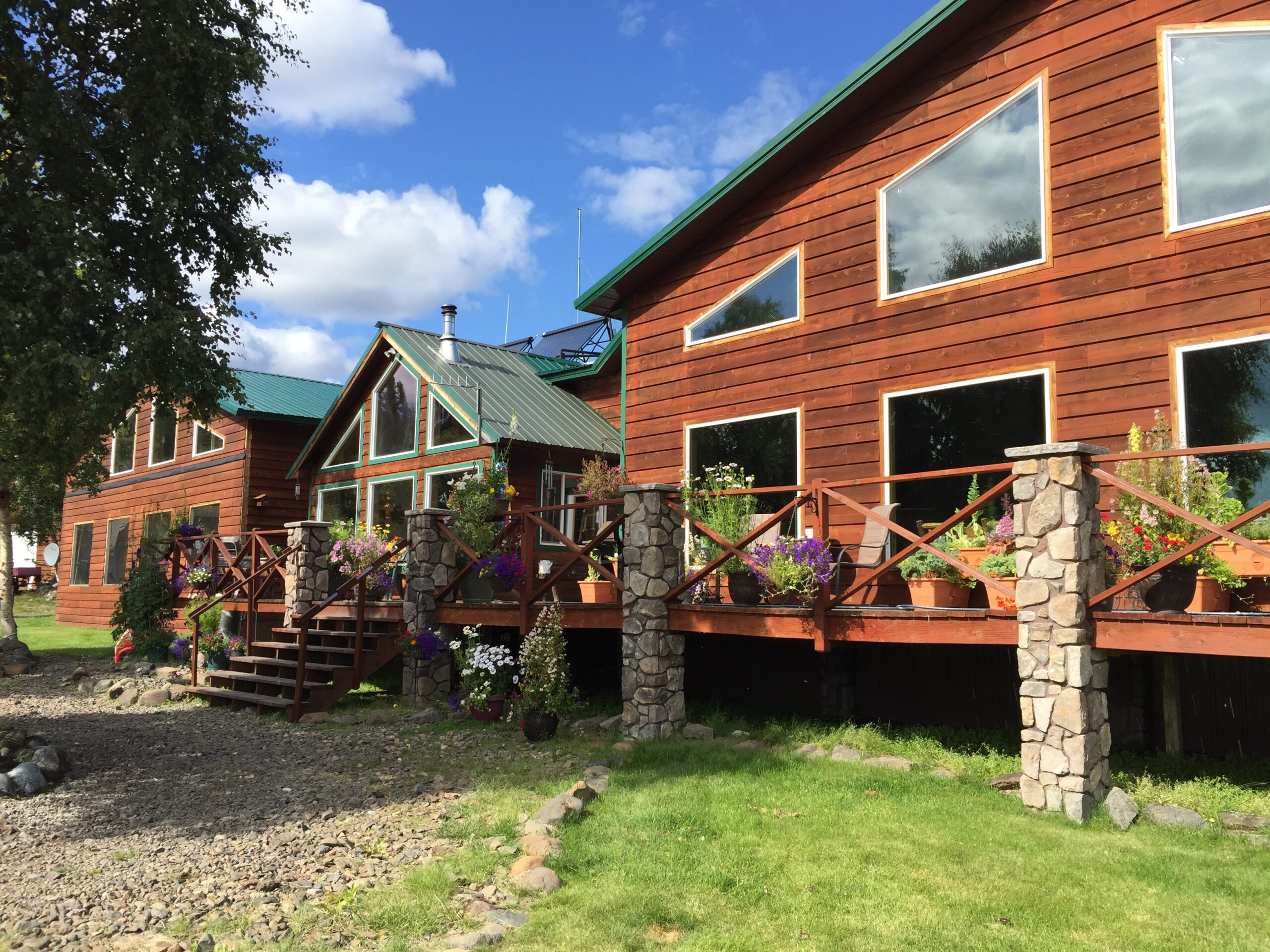
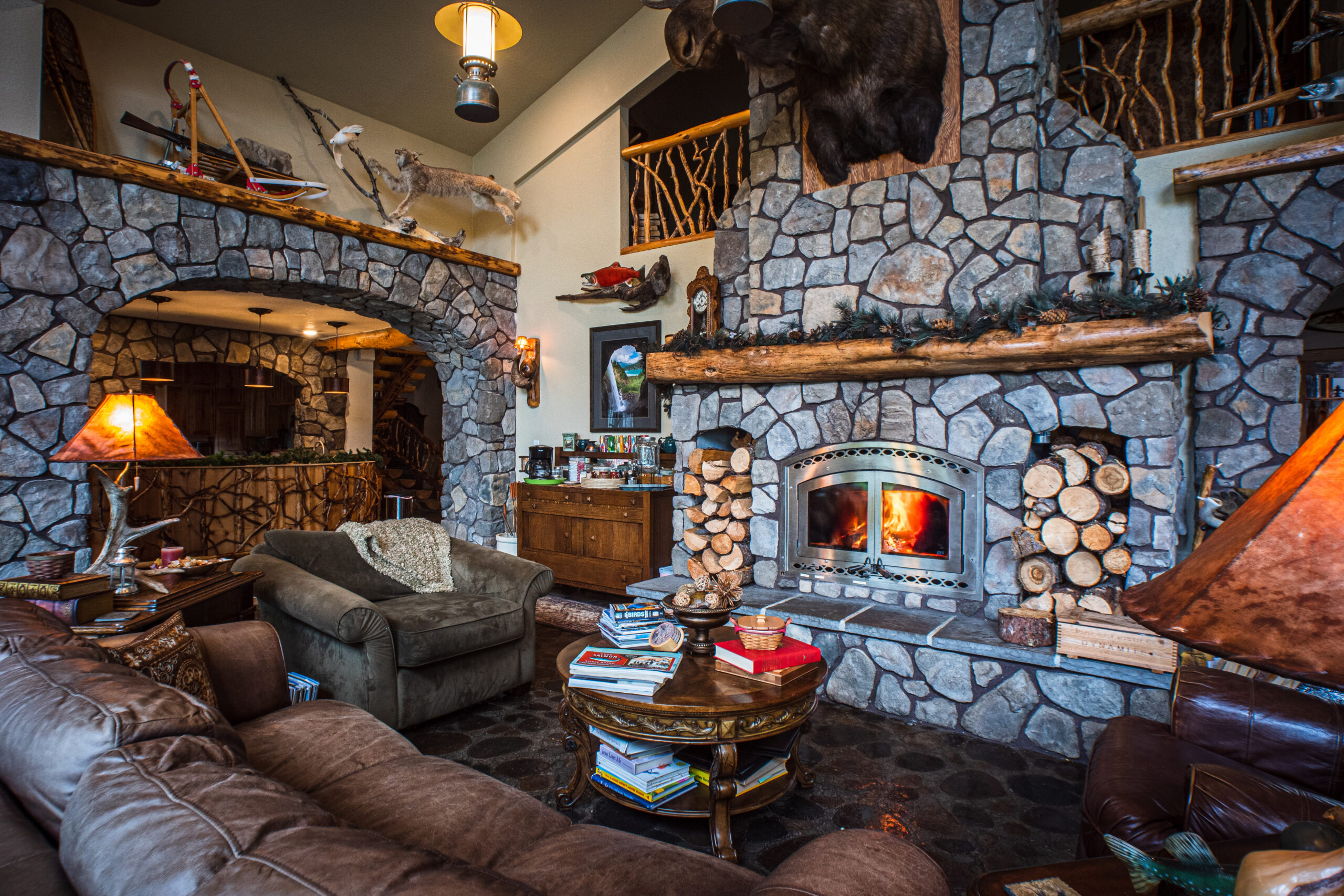
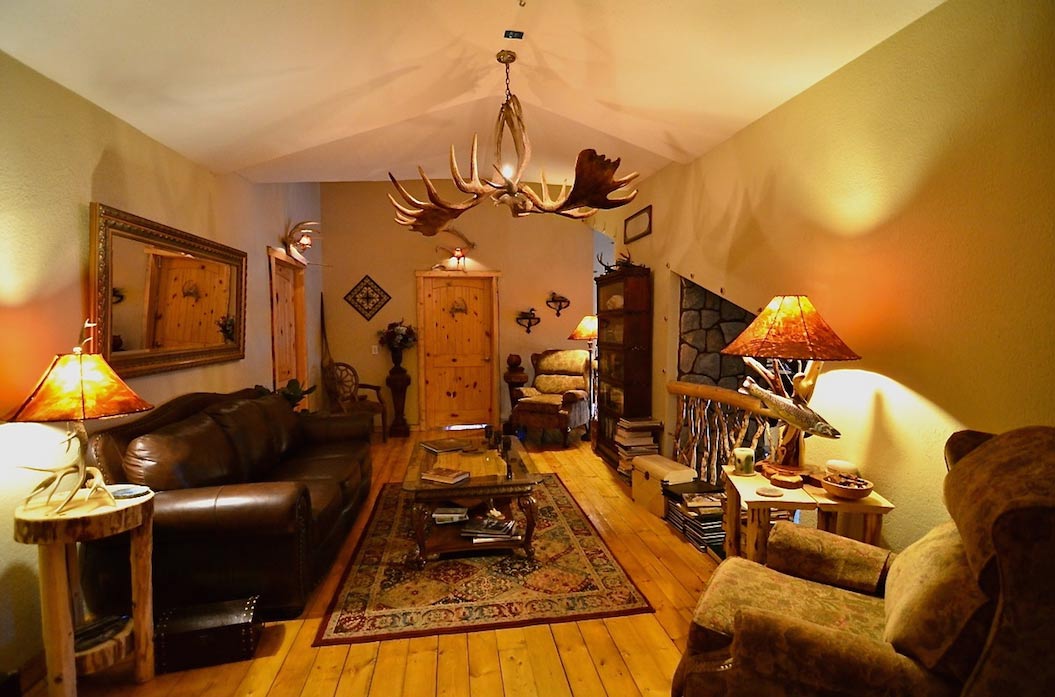
Make the Journey, Live the Dream
